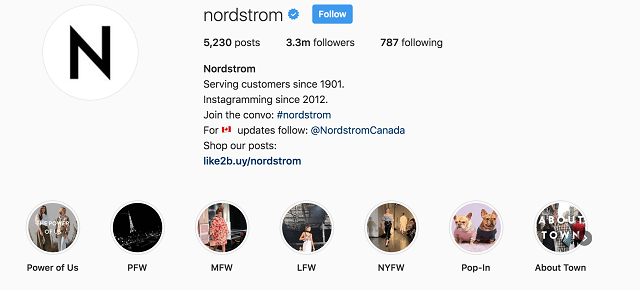How Social Selling Can Provide eCommerce Brands A Competitive Advantage
Social selling is the term given to selling online through social media. It’s a far more streamlined approach and, thanks to recent innovations such as chatbot checkouts or autofill for payment and delivery details, it now means that purchases rarely take more than just a handful of clicks.
It all makes complete sense if you take a second to think about your customers and their actions in the modern day marketplace, selling on social media is now a completely legitimate and expected thing for your company to be doing. A notion that is backed up by recent social selling statistics that include the fact that:
- There are 1.47 billion daily active users on Facebook alone
- 60% of Instagram users say they find new products on the platform
- 30% of online shoppers say they would likely make a purchase from Facebook, Pinterest, Instagram, Twitter or Snapchat.
With all this in mind, let’s take a look at just how effective the social selling process is for businesses and why is social selling important in the first place?
Social Selling for eCommerce Brands
When it comes to your social selling strategy, there are a number of different approaches you can take. So just how can social media be used for sales and subsequently what are some examples of social selling companies who are utilising it effectively?
Instagram: One of the best parts about Instagram is how visual it is. It’s easier to sell when people can visualize your product in use. When you’ve painted a picture of what your product looks like in real life, your followers are more likely to buy. Instagram has now added Shoppable Posts that gives brands the ability to tag items in organic posts which, when tapped, brings up a new page which leads to a checkout. If you are a retailer looking to boost your fashion social media strategy, or any brand who wants to highlight products in a visual, selling on Instagram is the way to go. As shown below, Nordstrom gives viewers the option to purchase directly from their Instagram account, opening up another viable channel for driving conversions.

Pinterest: Pinterest, much like Instagram, relies on content that is, first and foremost, visually appealing. That means showcasing your products with quality imagery will help you gain reach and engagement. Recently, Pinterest increased the partnerships for buyable pins making it available to even more brands and a shopping cart was added to make it easier for shoppers to buy multiple products from different suppliers in one go.

Social Selling Tips For eCommerce Brands
Social media allows brands access to a massive database, all over the world, and with a potential to completely change the game for them overnight. However, without proper planning, marketing on social platforms can either be ineffective or harm your company in the long run. By following these simple tips, you’ll quickly see just why social selling is important to your business.
1. Be Accurate With Your Targeting: In order for your marketing to be effective, you need to choose the platform that your audience uses. It is not helpful for you to target Facebook users if the majority of your audience prefers to engage with you on Instagram. Doing research into your consumer’s habits can make all the difference, factors such as:
- What platform do they use to communicate with you the most?
- What time of day are they usually using the platforms?
- What day of the week are they online?
- Do they prefer to use different platforms on different days?
- Would posting on weekends be more effective than a weekday?
By finding the answers to these questions and anything else you think is relevant will help you build a useful data set from which you can build a fully optimised scheduling plan.
2. Imagery Works: Images help to drive social media engagement so if you want to catch the attention of your audience, make sure you use a compelling image alongside your post. People engage with posts that feature imagery or a video at a much greater rate than just a standard text based one. Using images to highlight sales, offers, releases or any information relating to your brand can help to engage with your audience more effectively than just speaking to them through a wall of words.
3. Streamline The Process: Customers want to be able to complete their purchases quickly and easily. This means there should only be a few steps to take the buyer from the discovery stage through to checkout. Use features like a “Buy” or “Shop Now” button on your Instagram and Facebook ads to help make this goal a reality. Putting more barriers and unnecessary steps between your consumer and a completed purchase only increases the likelihood that they will click away and fail to convert due to frustration brought on by a lack of efficiency.
4. Customer Content: User-generated content makes shoppers 97% more likely to convert. Social media provides the perfect platform for you to collect and showcase content from your existing customers. User-generated content featuring your products will act as social proof, an essential part for winning people’s trust. As well as this, when customers share photos that feature your product, it can help earn the trust of the customers’ own network of followers, raising the awareness of your brand and potentially generating more sales.
Problems You Can Face While Using Social Selling
While social selling can be a great help when it comes to growing your business, there are many problems you will face when it comes to implementing an effective strategy, but by avoiding these common mistakes, you’ll be able to see yourself rise above the competition.
1. Don’t Just Share Randomly: Randomly sharing content, especially irrelevant things, will waste your customers time and can harm your brand identity. Prospective customers want to know about who you are, what you stand for and how you can make their lives better so anything that is not doing that will stand out as disingenuous to them. When it comes to social selling, everything needs to have a clear reason behind it.
2. Getting People’s Attention: If your social media accounts are new, established and larger channels will easily drown out whatever you have to say. But don’t worry about what the big companies are doing. Instead, build your social reputation by staying focused on your target market. Let your users guide your content creation and make sure you get the attention from the right kind of people, rather than the most people.
3. Getting Lost In Platforms: There are so many social platforms that people use regularly that it can be hard to keep track. You can’t be everywhere at once, so don’t try to be. Instead, concentrate on cultivating a strong following on just a few social platforms, potentially even just one. Establish yourself and your brand where the majority of your prospects are and where you’ll get the best ROI. Don’t spread yourself too thin otherwise you won’t be able to make an impact anywhere.
Final Thoughts
Social selling is the future! There’s really no doubting the potential of social selling and why it makes such a positive impact on e-commerce. Communication that happens digitally reaches far and wide in a matter of minutes, and it’s the ultimate boon for brands that want to reach more people. Whether it will completely take over the marketing scene is yet to be determined but, at the rate that digital media is growing, we might as well prepare for the new wave heading our way!
Subscribe To Us
Contributors
Categories
Subscribe To Us
Contributors
Categories

This website uses cookies so that we can provide you with the best user experience possible. Cookie information is stored in your browser and performs functions such as recognising you when you return to our website and helping our team to understand which sections of the website you find most interesting and useful. Third party cookies such as Google Analytics is also used on this site to provide analytics in order to better understand the user engagement on our site.
You can adjust all of your cookie settings by navigating the tabs on the left hand side.
Strictly Necessary Cookie should be enabled at all times so that we can save your preferences for cookie settings.
If you disable this cookie, we will not be able to save your preferences. This means that every time you visit this website you will need to enable or disable cookies again.







0.Comments